The art of love
Love threads its way through many of the artworks in the Walker Art Gallery’s collection, and across the years artists have explored the themes of romance, passion and heartbreak in paintings. Let’s go find a little love, and see how different artists have tackled the subject across the centuries.
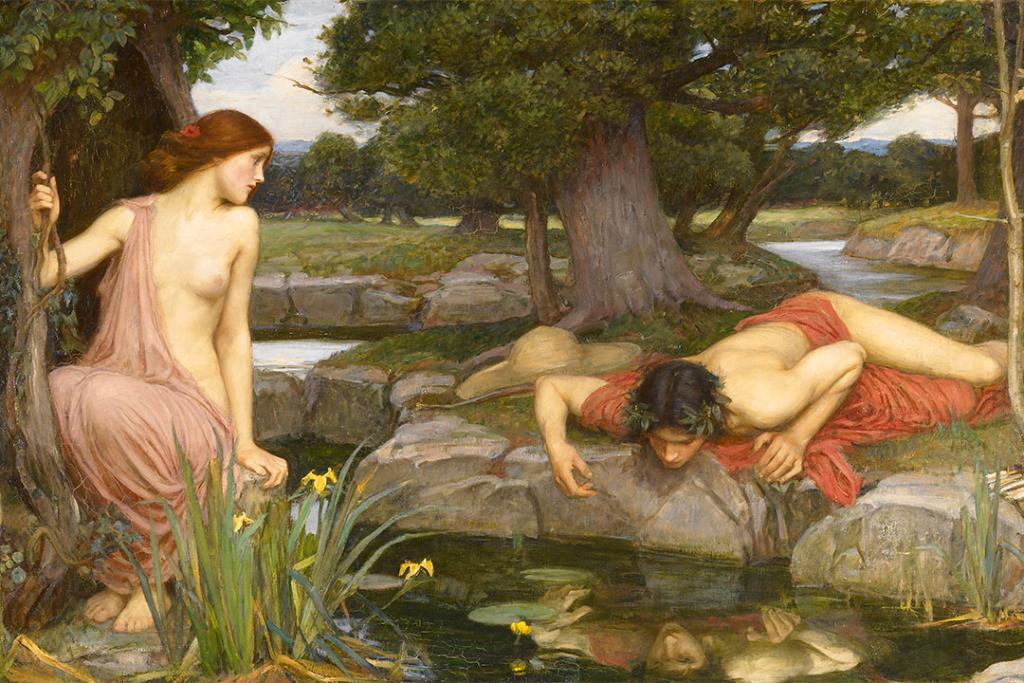
Dante's Dream
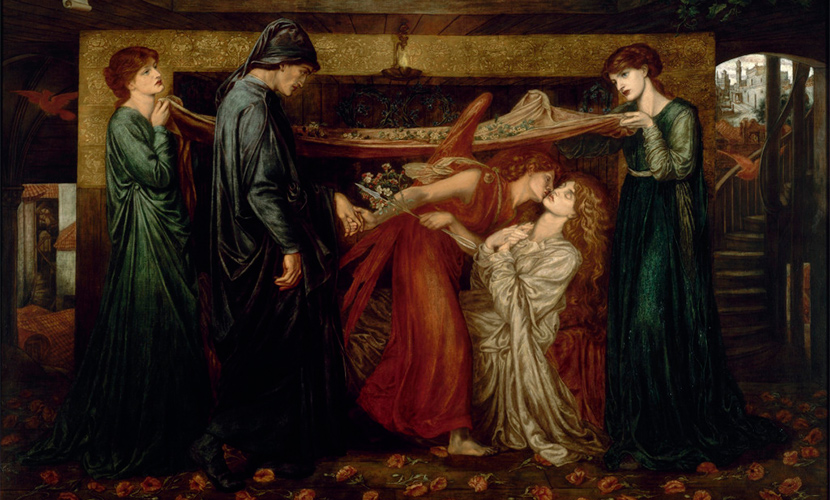
No one combined love and death quite as elaborately as the Victorians. Dante Gabriel Rossetti took that trait and made it his own. His obsession with the medieval Italian poet Dante led him to paint one of the Walker’s most famous paintings, ‘Dante’s Dream’. It is so ripe with symbolism it's palpably throbbing. Imagine a film director – “More blossom! More poppies! More doves! Give me RED!”.
Yet, the misery. Rossetti’s masterpiece suggests that even fabric can experience grief. The weight of sadness is pulling down on the pale-faced figures and their robes as they gather round the death bed of Beatrice Portinari, the object of Dante’s unrequited passion. Flowers, depicting purity and virginity, are scattered about - a flickering lamp depicts death. Love is the biggest symbol of all – she is the original ‘lady in red’, leading Dante to Beatrice. Jane Morris, Rossetti’s other obsession, was the model for Beatrice.
Dante and Beatrice
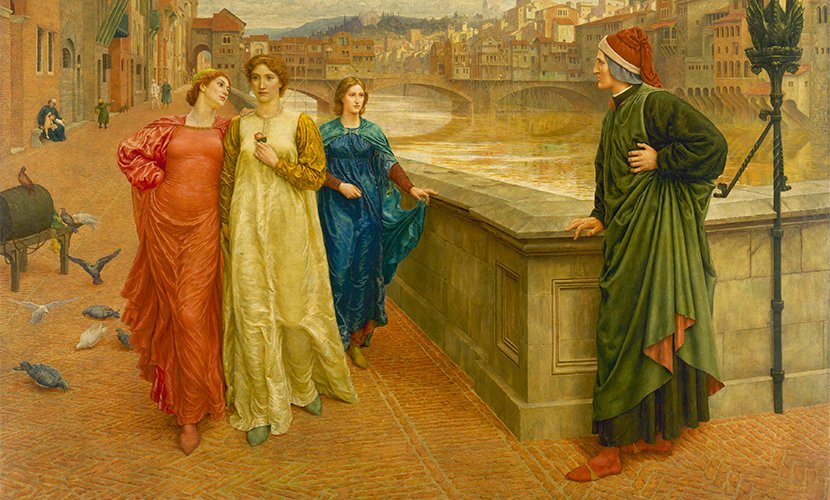
Prior to her untimely demise surrounded by symbolism, Beatrice (but not Jane Morris) can be seen giving Dante the snub in Henry Holiday’s ‘Dante and Beatrice’. Gossip had reached her that he fancied other women. But he was pretending. To hide the fact he loved her. What a tangled web we weave. Beatrice's companions look knowingly at Dante, who dramatically clutches his heart. Dante's love for Beatrice remained platonic and he married someone else.
Samson
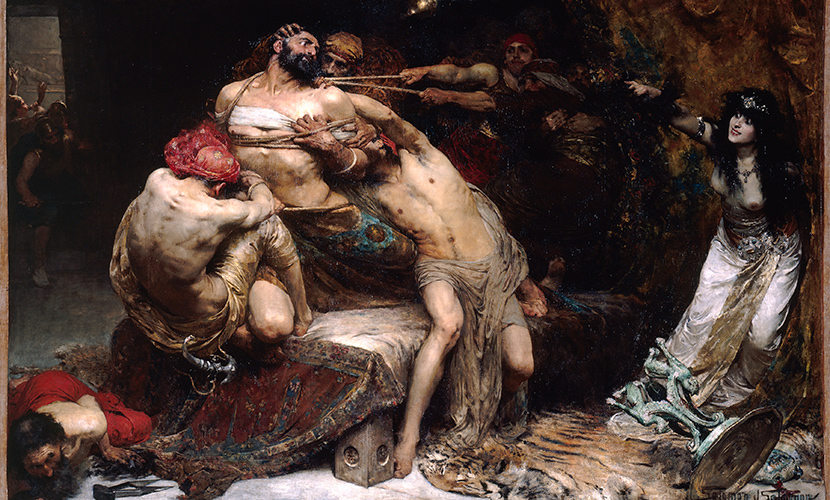
Samson made a bad choice when he fell for Delilah. He might have been a Biblical hero renowned for his strength in the Israelites’ struggle for independence against the Philistines, but in all honesty, where did that get him? When he let slip his strength would fail if his hair was cut, Delilah called in the barber faster than he could say ‘beard wax’. You can tell from his expression in the Walker’s painting by Solomon Joseph Solomon that he wants to cancel the dozen red roses. It didn’t end well.
The Death of Nelson
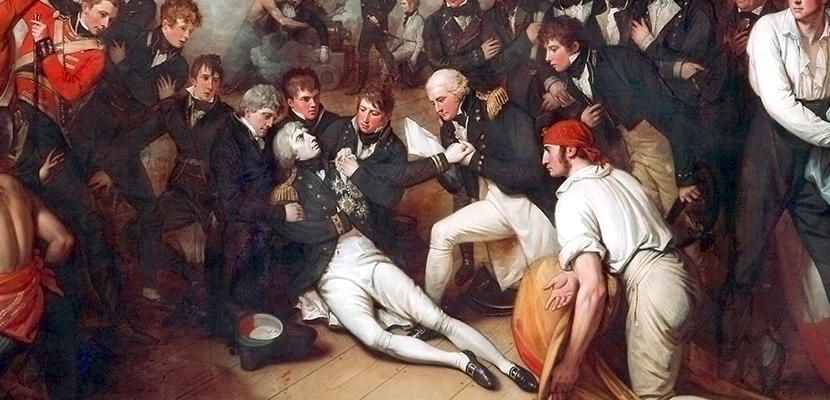
The relationship between Admiral Lord Nelson and Captain Thomas Hardy has been the subject of much speculation. Their lingering final moments together have been played out across the paintings of numerous artists, including this version of ‘The Death of Nelson’ by Benjamin West. Such was the demand for representations of the great man’s demise, poor Hardy and Nelson were never going to get any privacy on canvas for the Admiral’s famous and final expression of love, “Kiss me Hardy”.
Portrait of George Delves
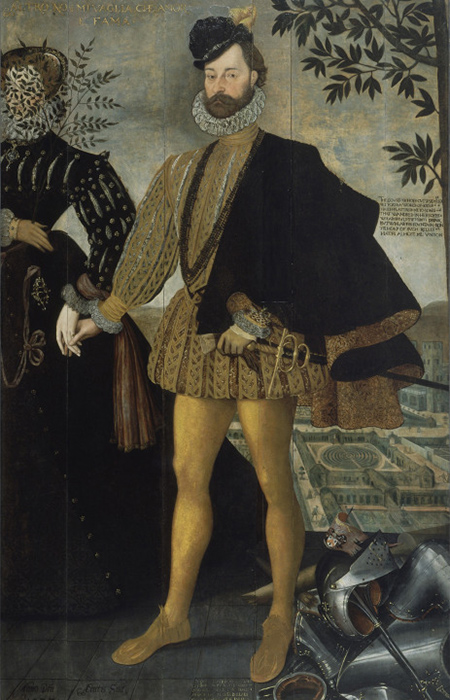
An early tear-jerker, and my favourite man in tights, is this 16th-century portrait of George Delves in a Garden of Love, holding hands with his companion, her face symbolically covered with leafy fronds. So far, so good, until you realise that she is either a ghostly embodiment of his former wife, or an allegory of a love yet to come. Poor George. Alone, or still hoping. Armour piled at Delves' feet indicates that he not only had good legs but he could fight as well. The painting has an Italian inscription meaning ‘nothing is of importance to me except love and fame’. Aah. Perhaps George may wish to reconsider his ego if he is looking for love everlasting.
Henry VIII
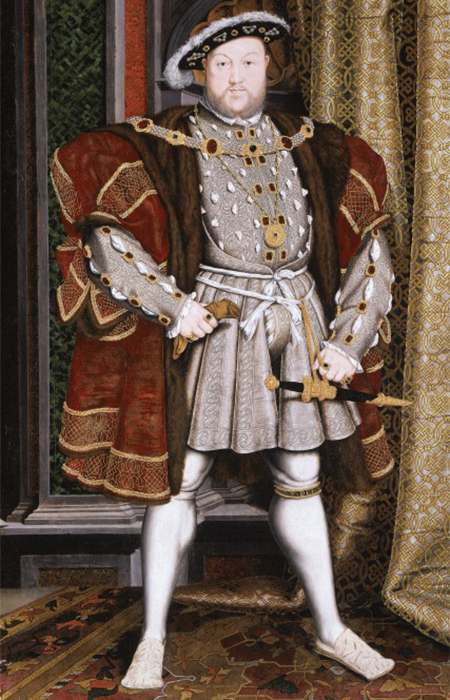
Finally, falling in love with oneself - here are two instances of why that might not be a good idea. Henry VIII was probably his own biggest fan, lavishing jewels and sumptuous fabrics upon himself so that on seeing portraits like this one, from the workshop of Hans Holbein, people would both love and fear him. And hopefully, some would be tempted (or pushed by their families) to join the queue to be his next ill-fated wife, in the infamous monarch’s relentless pursuit of a male heir in his own image – a sort of perpetual Henry, if you will. As we all know, girl power won the day, but the tyrannical Henry would be delighted by the fact that we are still admiring the images of him as much as he did.
Echo and Narcissus
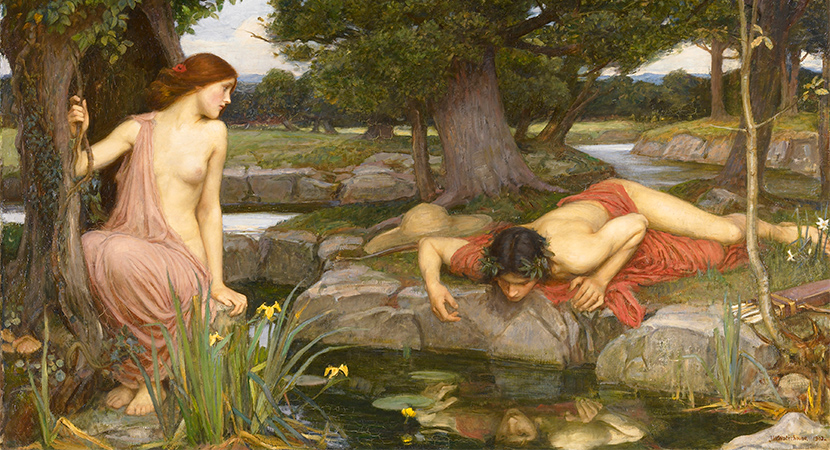
In the Roman myth, Echo loved the beautiful but vain Narcissus, who was desired by men and women, mortals and gods. Rejected by him, Echo pined away until only her voice remained. As punishment, Narcissus fell in love with his own reflection. We can only imagine that, left to his own devices, he would have spent his senior years plagued by back and neck problems resulting from decades spent crouched on damp grass with his head over-hanging a pond. Alas, death by sorrow brought on by self-rejection led to his early, still youthful demise. He loved himself, but his self didn’t love him.
Think on, and tread warily on St Valentine’s day if your affections are turning inward, and especially when there is heavy symbolism in the air.
